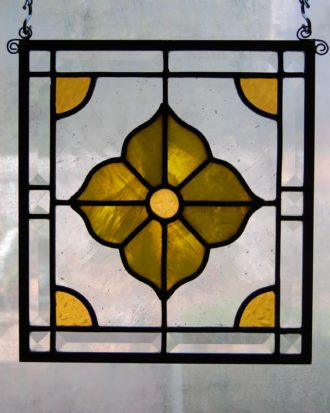I started browsing the internet the other evening to see if I could find a recipe for leaded stained glass glazing compound. (I have a recipe I use and have had a good experience with it.) I found that there are as many recipes as the people that post them. One thing in common with all these people was the reason to do this step in your process to produce a finished leaded stained glass panel. Some people believe glazing is a hard, dirty, and time consuming task that is not necessary if your piece is not going to be exposed to the weather. (I believed this when I first started because I was in such a hurry to finish the project I was working on. I learned anything doing, is worth doing right.) All these post agree that the glazing of the panel not only water-proofs the panels, but adds strength and secures the glass in the came channels. It gives the panel the feel of a solid well-built piece of art. Getting back to the reason for this blog, the recipe for the glazing compound. After reading all these recipes and methods to apply them, I think I’ll stick with what I use and the way I apply it. I’ll cover the glazing process in another post.
The recipe I use is as follows:
1 part boiled Iinseed oil
1 part pure spirits gum turpentine 4 parts Whiting
enough stove or lamp black to get the desired color
The first two ingredients can be bought at any hardware store. The whiting is calcium carbonate or ground limestone. The calcium carbonate can be bought on the internet in different particle sizes. I have always used the food grade. The last ingredient is used to color the glazing. It also can be bought on the internet. I have also used black acrylic paint for color, but the stove or lamp black works best for me.
I start by adding the linseed oil and turpentine into a mixing bowl. I add the whiting a little at a time stirring with a paint stir as I go. The consistency I’m trying to achieve is something like peanut butter. I add the Lamp black stirring until I get the color I want. It’s an easy process and at this point it’s ready to use. I stir the mixture as I’m glazing the panel, to keep the mixture consistent. I keep the glazing compound in an air-tight container with a small amount to turpentine covering the top of the glazing if I’m going to use it right away. This keeps the mixture from drying out. I come from the old school that believes, “Waste Not, Want Not”. During the clean-up of the panel after the glazing is complete, I return unused glazing back to the container with any whiting left on the newspaper. (I spread newspaper on the table during the glazing process.) The glazing mixture can be used over and over by following these directions. When you use the glazing the next time just stir it and adjust your ingredients to return to the desired consistency.
I hope this post is useful to you. Please write your comments. Thanks for visiting my website.
Have a great day! Bill Olexa Stained Glass Designed

 All Designs
All Designs  Celestial Designs
Celestial Designs  Floral Designs
Floral Designs  Geometric Designs
Geometric Designs  Religious Designs
Religious Designs 